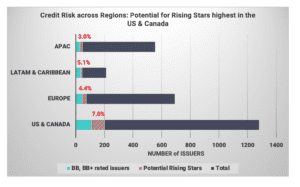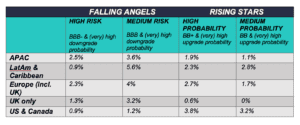The role of the fixed income portfolio manager is to optimize fixed income securities and fixed income investment opportunities to ensure they are reaching their clients’ investment objectives and goals, or even exceeding them. Often this takes time and resourcing power which reduces already minimized margins and increases operating costs. bondIT is the asset management software platform designed to improve cost-effectiveness and dramatically reduce the time associated with portfolio management. Using our asset management tools, advisors and portfolio managers can return optimized investment strategies and proposals to their clients in a matter of just minutes. bondIT does your portfolio optimization for you in a fraction of the time and using a range of powerful analytics as well as client-specific metrics.
What are fixed income securities?
Fixed income securities are a type of investment made using bonds. The bond market covers municipal bonds, government bonds and the corporate bonds market. Bonds are essentially debt instruments. They are issued by both government organizations and private companies to generate cash flow. Investors can purchase a bond issued by either a government body or a private corporation and this type of investment is known as fixed income trade.
How does an investor know which type of fixed income instrument they should consider investing in? Well, the types of bonds are a great indication as to the likely risk they pose to an investor. For example, government bonds tend to pose the lowest risk to an investor. Government bonds are issued by agencies like the U.S. Treasury and Treasury bonds tend to be amongst the lowest risk investment opportunities available. The reason for this is these types of bonds are backed by the U.S. Government which generally as a very high credit rating and therefore a very low risk of default on the bond an investor is looking to purchase.
Government bonds can also be issued by other governing bodies such as water treatment facilities as well as local governments looking for bond funds to get big capital projects underway. Big capital projects require fast cash, so bonds are a great way of raising that capital quickly. A bond will be issued by the issuer at a specific price and with a specific interest rate. This could be fixed interest rates, or it can be a floating rate. The interest rate determines the type of income that can be generated from individual bonds. Interest payments, also known as coupon payments, are paid to the investor regularly throughout the term of the bond and then, at the bond’s maturity date, the initial capital investment amount that the investor used to purchase the bond is then returned to them.
Evaluating fixed income risk
For capital projects, investors can evaluate the risk of their investment based on how the governing body intends to generate income from the capital project at its completion. For example, if bonds have been issued to help to cover the cost of a new highway then the highway will likely have a toll cost for road users once it is finished. That toll cost will help to pay for interest payments made to investors over the term of their bond as well help to generate the funds required to repay investors when the bonds expire. A riskier fixed income option would be a local hospital. While the hospital charges fees for its services, there are greater options within the healthcare market for patients seeking lower-cost medical care. In this case, there is no guarantee that a new hospital will survive and the risk posed to the investor is higher than for a new highway that is more likely to be used by road users who don’t have an alternative, cheaper option to use instead.
Fixed income high yield bonds are determined by their risk rating. The higher the risk, the greater the return. Choosing which corporate bonds to buy is largely determined by the risk they pose with both investment grade and non-investment grade options to choose from. Investment-grade options are generally low risk fixed income options issued by corporations with high credit ratings and reliable credit histories. Like government bonds, the return on investment may be lower than other corporate bond opportunities but the risk of default is also low so there is a much higher chance of regular coupon payments made as well as the return of the capital investment amount at the end of the bond’s term.
The yield of corporate bonds can be quite high if you’re willing to assume the risk of non-investment grade bonds. These types of bonds are also known as junk bonds and are issued by private companies with a poor credit rating. Over-capitalized firms as well as start-ups are most likely to issue these types of bonds and, just as in personal lending, the higher the risk, the higher the interest the bond issuer must pay. If the corporation manages to survive throughout the term of the bond, then what was initially a junk bond may turn into an angel bond. This occurs when the issuer’s credit rating increases over the term of the bond, making them a less and less risky investment option. The investor enjoys a high interest on the bond as well as the return of their capital investment. A fixed income asset like this is rare but they do happen. It is the role of the portfolio manager to balance investor portfolios to include a range of fixed income risk and investment options so that income generation remains steady and they are reaching their clients’ investment goals.
Technology for fixed income portfolio management
bondIT uses the latest fixed income analytics and software development methodologies to produce an intuitive, user-friendly and powerful fixed income portfolio management system. Generate instant, compliant investment proposals tailored to individual investor goals. Save time and money relying on BondIT’s real-time analysis or work closely with our team of fixed income experts to generate bespoke IT solutions designed to work within your business workflows, saving even more time and money.
From the dashboard, you can review and examine investment exposures and bond allocation across the entirety of your portfolios or only a subset of them. Drill into individual characteristics to identify the underlying source exposure and then use our smart algorithms to generate suggested fixed income trades. Compare bondIT’s analysis with your ideas to develop the best strategy for reallocating exposures in fixed income bonds. A proposal can be generated in a matter of minutes using bondIT, rather than potentially hours of trawling through possibilities and analysing potential scenarios for increasing yield of corporate bonds. bondIT’s powerful ‘Solve Anyway’ function delivers usable investment strategies even when conditions seem infeasible.
bondIT is the asset management solution designed to support portfolio managers seeking the best return and management of fixed income securities, freeing up their time for more important duties like remaining on top of emerging fixed income investment developments and delivering client needs by optimizing bond funds. Contact us today to discuss what bondIT can deliver for your business.




